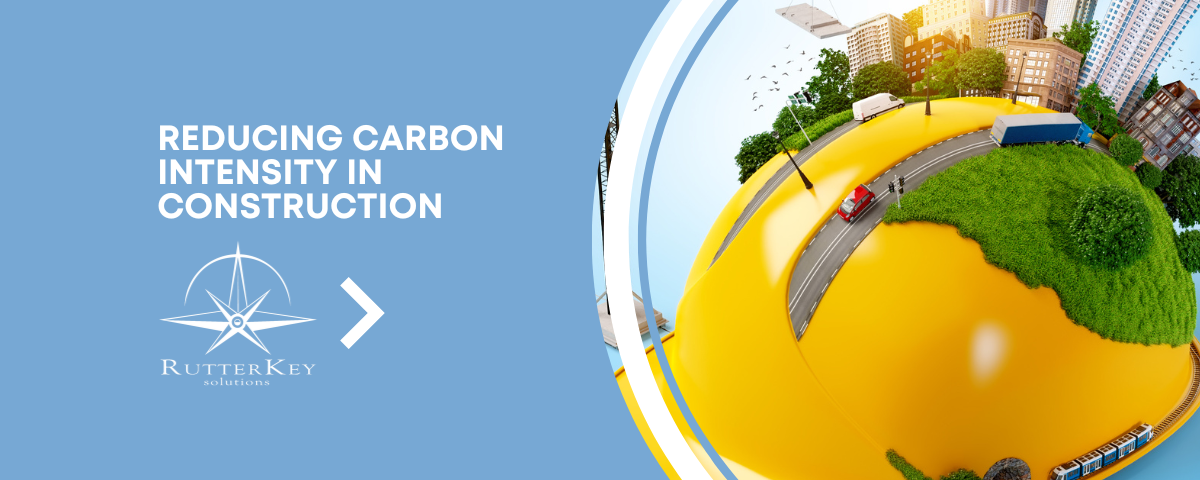
Benefits of Modern Procurement Methods, Data, and Digital Technology in the UK’s Construction Industry
February 6, 2023
What is to Be Expected in UX Design in the Coming Years?
February 8, 2023Reducing Carbon Intensity in Construction Through Tech-Focused Mobility and Transport Solutions

Modern construction projects are increasingly being held to higher environmental standards. This article explores how technology-focused mobility and transportation solutions can be used to reduce carbon intensity in the construction sector.
Impact of transportation and mobility on the environment
Transportation and mobility in the construction industry have a major effect on the environment. The demand for resources and materials, as well as the need for energy-intensive transportation and mobility, results in emissions of greenhouse gases and other pollutants.
The construction industry is responsible for increased levels of noise, air, and water pollution. These repercussions can cause several ecological problems, such as:
- Increased levels of smog
- Poor air quality
- Soil and water contamination
As a result, construction companies have been forced to implement measures to reduce the environmental impact of their work.
Developing technology-focused mobility and transportation solutions
The construction sector is continually developing technology-focused mobility and transportation solutions to increase safety and efficiency, examples include:
- The use of drones for surveying
- Virtual reality for training
- Automated guided vehicles for materials transportation
These solutions help foster a safer and more efficient environment, while also reducing costs and improving the overall customer experience. Not to mention, utilizing machine learning and artificial intelligence is also becoming popular, allowing for more accurate predictions and improved workflow.
By investing in these technologies, the construction sector is working towards a more sustainable and cost-effective future.
Benefits of technology-focused mobility and transportation
Technology-focused mobility and transportation in construction offer numerous benefits, such as:
- It helps to improve efficiency
- Increases safety
- Reduces ecological damages
- Saves time and money
Utilizing GPS tracking and other data-driven technologies, project teams can better plan routes and manage resources, reducing wasted time and fuel.
Smart materials and connected equipment can automate processes and enable worksite analytics. Drones and robots, on the other hand, can monitor sites and perform tasks with greater precision and safety.
Additionally, improved communication and navigation technologies can reduce the risk of human error, helping to maximize the efficiency of building projects.
Challenges with technology-focused mobility and transportation
The construction industry has seen massive changes due to advances in technology. Four of the biggest challenges associated with technology-focused mobility and transportation are:
The need for workers to be trained on how to use new technology
- Costs of investing in new tech
- Successfully integrating new tech into existing systems
- Ensuring these technologies are used safely and efficiently
Technology-focused mobility and transportation solutions
Here are the top three tech-focused mobility and transportation solutions commonly used in today’s construction sector:
1. Autonomous vehicles
Autonomous vehicles provide a solution for reducing carbon intensity in the industry. They reduce emissions by decreasing the amount of fuel needed to transport materials and personnel from one site to another. Moreover, these types of vehicles cut down the amount of time needed to transport materials, as they can be programmed to travel to their destination with minimal human intervention.
2. Electric vehicles
Electric vehicles are quieter and more efficient than traditional combustion engines. They also help lessen carbon intensity by eliminating the tailpipe emissions associated with gas-powered vehicles.
They help reduce the costs associated with fuel, as they are powered by electricity, which is generally cheaper and more efficient than traditional fuel. Electric vehicles require less energy to travel the same distance as traditional vehicles.
By utilizing electric vehicles, the construction industry can reduce its carbon footprint and save money in the process.
3. Telematics
Telematics is another powerful solution that can diminish carbon intensity in the building industry. Providing real-time data about vehicle fleets allows efficient routing and scheduling of deliveries. It reduces the amount of time and fuel used for transportation.
Telematics provide insights into vehicle performance, allowing construction companies to identify inefficiencies and make changes to reduce fuel consumption and emissions.
It can help improve safety by providing vehicle tracking and monitoring capabilities to ensure they are operated safely and efficiently. This can greatly mitigate the risk of accidents and associated emissions.
Effects of technology-focused mobility and transportation solutions on the environment
Overall, technology-focused mobility and transportation solutions have positive impacts on the environment. They help reduce emissions and traffic congestion, and at the same time, improve efficiency and safety.
Continuous technological advancements enable more efficient use of existing infrastructure that could further lead to improvements in the future.
All these factors combined create a more sustainable transportation system that has a positive environmental outcome in a broader sense. With the ever-changing industrial landscape, technology-based mobility and transport will continue to be valuable assets to the construction sector’s modernization.
How IFS and Boomi can support reducing carbon intensity in the construction industry
IFS and Boomi can aid the reduction of carbon intensity in the construction industry through technology-focused mobility and transportation solutions.
IFS provides integrated solutions for fleet management, optimization, and asset management. Boomi, on the other hand, offers online booking, route optimization, and real-time tracking. These services boost efficiency while reducing emissions by:
- Optimizing routes
- Reducing travel time
- Providing better insights into transport needs
Together, IFS and Boomi can help the construction industry become more sustainable and mitigate its carbon footprint. Contact RutterKey Solutions today via the form below to find out more about how we can support the transformation of your construction organization through IFS, Boomi, or combined software implementations and upgrades using both software platforms.



